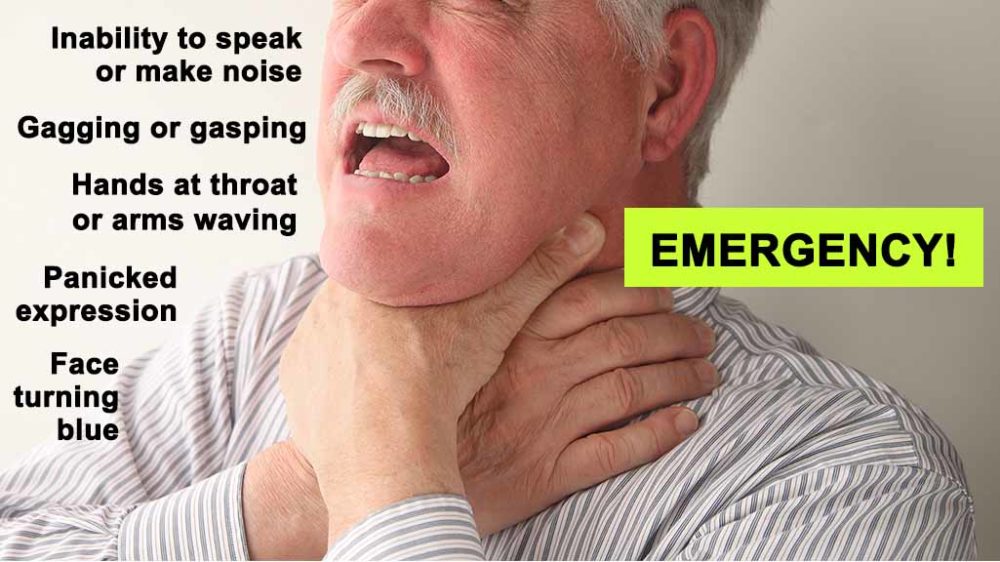
Choking

When to act
What to do
WHEN
When you see someone who appears to be choking, ask: “Do you need help?”
If the person can answer, speaking even just a word or two, they do not need the Heimlich Maneuver. Instead, encourage him or her to cough vigorously to try to dislodge the obstruction on their own.
But if the person can’t talk at all, is gagging or clutching his throat in a panic, follow the steps below. The Heimlich Maneuver should only be performed on a conscious victim who’s unable to breathe because food or a foreign object is blocking the airway.
WHAT
Heimlich Maneuver: Adult
- Stand behind the person and lean them slightly forward
- Put your arms around their waist
- Make a fist and place the thumb side of the fist just below the rib cage (about 2” above the navel)*
- Grab your fist with your other hand
- Pull the clenched fist sharply backward and upward under the rib cage in 5 quick thrusts
- Repeat until the foreign object is ejected
- If the obstruction is not cleared and the victim becomes unconscious, have someone CALL 911 while you start hands-only CPR
* If the choking victim is pregnant or obese,
perform the thrusts on the sternum (breastbone) instead of the abdomen
Lyme Ambulance strongly encourages Lyme residents to take our FREE ‘Hands-only’ CPR Class
Heimlich Maneuver: Child
The Heimlich Maneuver can be performed on children, however, if the child is between the ages of 1 and 5 or weighs less than 45 pounds, kneel behind the child and use less forceful thrusts
Baby (under age 1)
The technique is different for babies:
- Have someone call 911
- Lay the infant face down on your forearm making sure the baby’s head is lower than her body
- Use the heel of your hand to strike between the shoulder blades 5 times
- The strikes should be firm but not hard enough to cause injury
- Check the baby’s mouth and remove any foreign object
- If the airway remains blocked, turn the infant face up (with the baby’s head still lower than her body) and use your second and third fingers to give five inward and upward chest thrusts about ½ to 1½ inches into the infant’s breastbone
- Check the infant’s mouth for a foreign object again; repeat the process until the object is dislodged
- If the infant becomes unconscious, start CPR
If YOU are choking
And no one else is around:
- Make a fist with one hand and place the thumb side of the fist below your rib cage and above your navel; grab the fist with your other hand
- Bend over a hard surface like a countertop or chair
- Shove your fist inward and upward
- Repeat until the obstruction is cleared
Sources: Cleveland Clinic, Johns Hopkins Medicine, Mayo Clinic, MedlinePlus (the national Library of Medicine)
 Lyme Ambulance Association, Inc.
Lyme Ambulance Association, Inc.